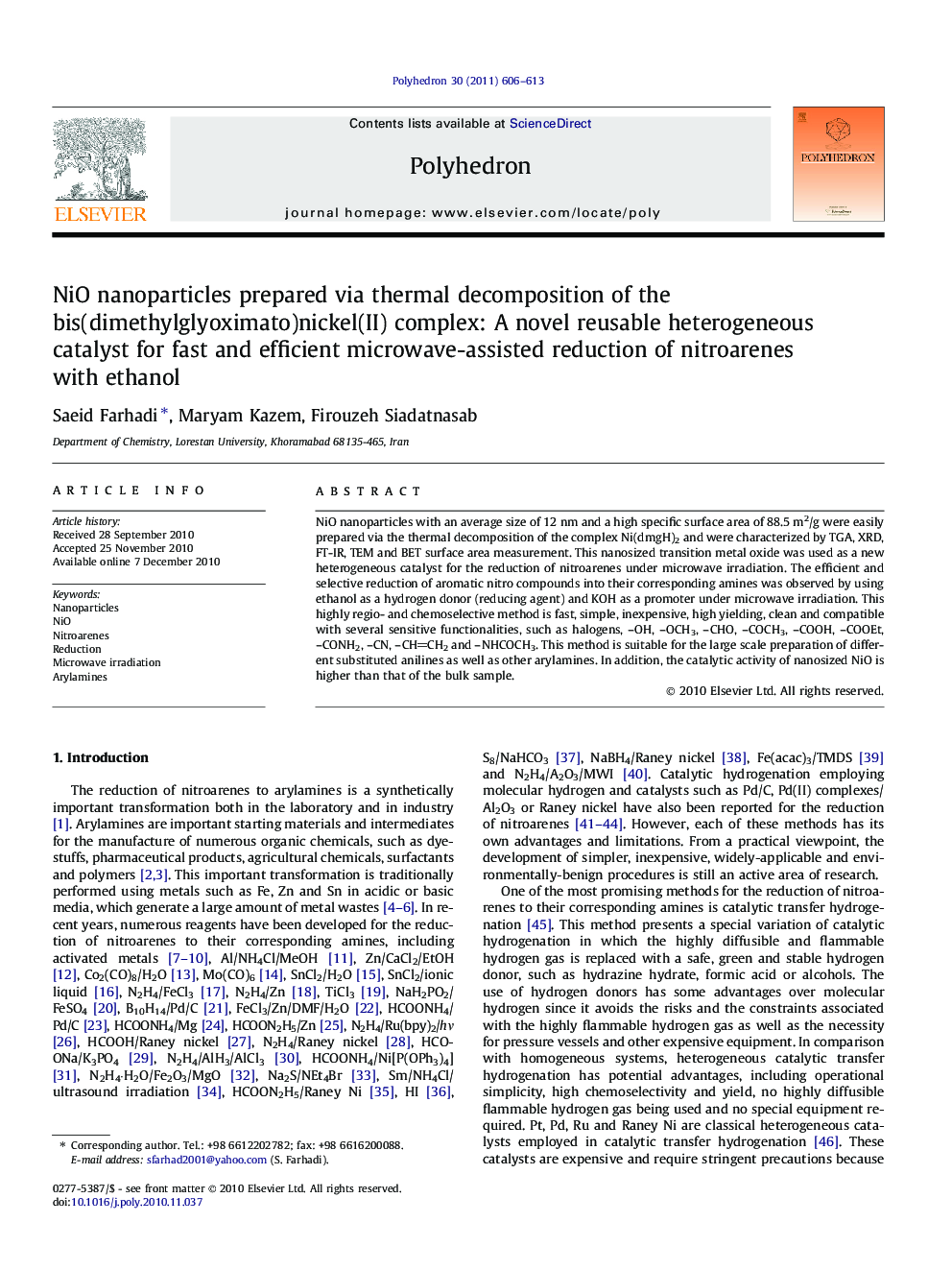| Article ID | Journal | Published Year | Pages | File Type |
|---|---|---|---|---|
| 1338358 | Polyhedron | 2011 | 8 Pages |
NiO nanoparticles with an average size of 12 nm and a high specific surface area of 88.5 m2/g were easily prepared via the thermal decomposition of the complex Ni(dmgH)2 and were characterized by TGA, XRD, FT-IR, TEM and BET surface area measurement. This nanosized transition metal oxide was used as a new heterogeneous catalyst for the reduction of nitroarenes under microwave irradiation. The efficient and selective reduction of aromatic nitro compounds into their corresponding amines was observed by using ethanol as a hydrogen donor (reducing agent) and KOH as a promoter under microwave irradiation. This highly regio- and chemoselective method is fast, simple, inexpensive, high yielding, clean and compatible with several sensitive functionalities, such as halogens, –OH, –OCH3, –CHO, –COCH3, –COOH, –COOEt, –CONH2, –CN, –CHCH2 and –NHCOCH3. This method is suitable for the large scale preparation of different substituted anilines as well as other arylamines. In addition, the catalytic activity of nanosized NiO is higher than that of the bulk sample.
Graphical abstractNiO nanoparticles with a high specific surface area were prepared via thermal decomposition of the Ni(dmgH)2 complex and their catalytic activity was evaluated in the reduction of nitroarenes to amines using ethanol as the H-donor under microwave irradiation. Various nitroarenes were reduced to their corresponding amines in high yields over a reusable nanosized NiO catalyst within very short reaction times.Figure optionsDownload full-size imageDownload as PowerPoint slideResearch highlights► NiO nanoparticles were prepared via thermal decomposition of the Ni(dmgH)2 complex. ► Nitroarenes were quickly reduced to arylamines by ethanol over nanosized NiO under microwave irradiation. ► This method is compatible with other reducible sensitive functionalities. ► The activity of nanosized NiO is higher than bulk NiO sample.
